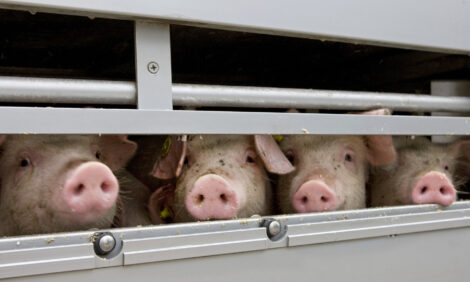



Market Preview: USDA Crop Estimates
US - The cost and profit challenges facing pork producers got significantly greater last week when USDA released its August estimates for the 2011 US corn and soybean crops, writes Steve Meyer in his latest Market Preview.Both numbers came in below expectations, which drove corn, soybean and soybean meal prices sharply higher and significantly increasing the outlook for production costs for producers who have not already priced inputs at lower levels.
USDA’s estimated 2011 national corn yield of 153 bu./acre was over 2 bu./acre lower than the average of analysts’ pre-report estimates and roughly 10 bu./acre below the long-term trend yield for 2011. When combined with a 500,000-acre reduction in the number of harvested acres, the lower yield pushed the estimated size of this year’s corn crop down to 12.914 billion bushels, 556 million bushels lower than the July estimate.
While still nearly 470 million bushels larger than last year, a 12.914-billion-bushel crop will result in a significant drawdown of corn stocks by the end of the 2011-12 crop year. USDA currently has that figure pegged for 714 million bushels, only 5.4 per cent of total corn usage. That is the second lowest stocks-to-use ratio in history, second only to 1995-96, when total corn usage was just 8.55 billion bushels.
Less to Come
This may not be over. The 500,000-acre reduction in harvested acres appears low to many observers, including me. The estimated 91.4 per cent of total planted acres that will be harvested is only fractionally lower than the long-term trend level in a year that has seen massive flooding in some major corn areas and a drought that will reduce many acres, from Kansas southward, to silage, at best.
In addition, there is a long way to go before 153 bu./acre is in the bin. The late completion of this year’s corn planting puts a large number of acres at risk of an early frost. Figure 1 comes courtesy of Iowa State University’s Robert Wisner. It shows the change from USDA’s August yield estimate to its final yield estimate from 1965 to 2010. The average change for all years is +1.2 per cent, but note the asterisked weather stress years. All but one (1988) saw a final yield that was lower than the August yield and some of those declines were large. This year’s weather stress has not been nearly as severe as some of those years, but the drought in the south and extreme heat during corn pollination could contribute to a lower end yield. Good moisture and a late frost could potentially hold or increase the final yield.

Perhaps the most surprising number in the report, though, was USDA’s forecast soybean yield of only 41.4 bu./acre, a full 2 bushels lower than the July estimate. Many analysts think the reduction is premature, but some pointed out those drought-impacted southern states may have trouble realizing the yields USDA published last week.
The smaller crop (now 3.056 billion bushels) would pull the year-end soybean stocks-to-use ratio down to 2.5, very near the levels of 2009 and 2010. Recall that processors scrambled to find soybean supplies late in those crop years. The bean and meal markets both reacted positively to the yield and crop reductions, but remain well within the trading ranges ($12.90 to $14.13 for November soybeans and $330 to $370/ton for December soybean meal) that they have been in virtually all year.
Production-Cost Formula Tweaked
These developments obviously mean higher pork production costs (Figure 2). My estimate for all of 2011, based on closing futures prices on Friday, 12 August is $87.44/cwt., carcass. That compares to $69.44/cwt., carcass, last year and $52.76/cwt., carcass, from 1999 to 2006 – before federal ethanol subsidies and mandates began. My forecast for costs over the next 12 months now stands at $92.57/cwt., carcass, easily high enough to take most of the luster off those wonderful Lean Hogs futures prices.

Readers should note that my forecasts for the rest of this year and the next 12 months are about $1.80 higher than just last week due to a model change. Iowa State University changed its production parameters in January 2010 to more closely reflect the modern industry that uses distiller's dried grains with solubles (DDGS) in diets, and moves pigs at weaning instead of as feeder pigs. Since that time, my model has been lagging ISU’s cost estimates by a few dollars, but there was not enough new data available to change my estimated regression formula, which is needed to compute forecasts based on corn and soybean meal futures prices. Having only 18 observations is still a bit sparse, but consistently missing $2 on the low side is unacceptable. The new equation gives results closer to ISU’s final monthly estimates.
Lower oil prices have the potential to push corn lower, but some settling of the world economy and some further weakening of the US dollar will push oil higher. Remember, the dollar and oil are the flip sides of the same world currency coin. Add in the continued uncertainty highlighted above and I think producers should be looking to buy breaks in corn or soybean meal. I would not go beyond next spring on meal, pending planting and crop progress in South America this fall. Where wheat and other grains are available, plan to use them to the fullest extent possible. Watch margins closely and lock in anything that approaches average for specific months. Pork demand has been good, but whether it can continue at a level to cover $90-plus costs is a real question.










